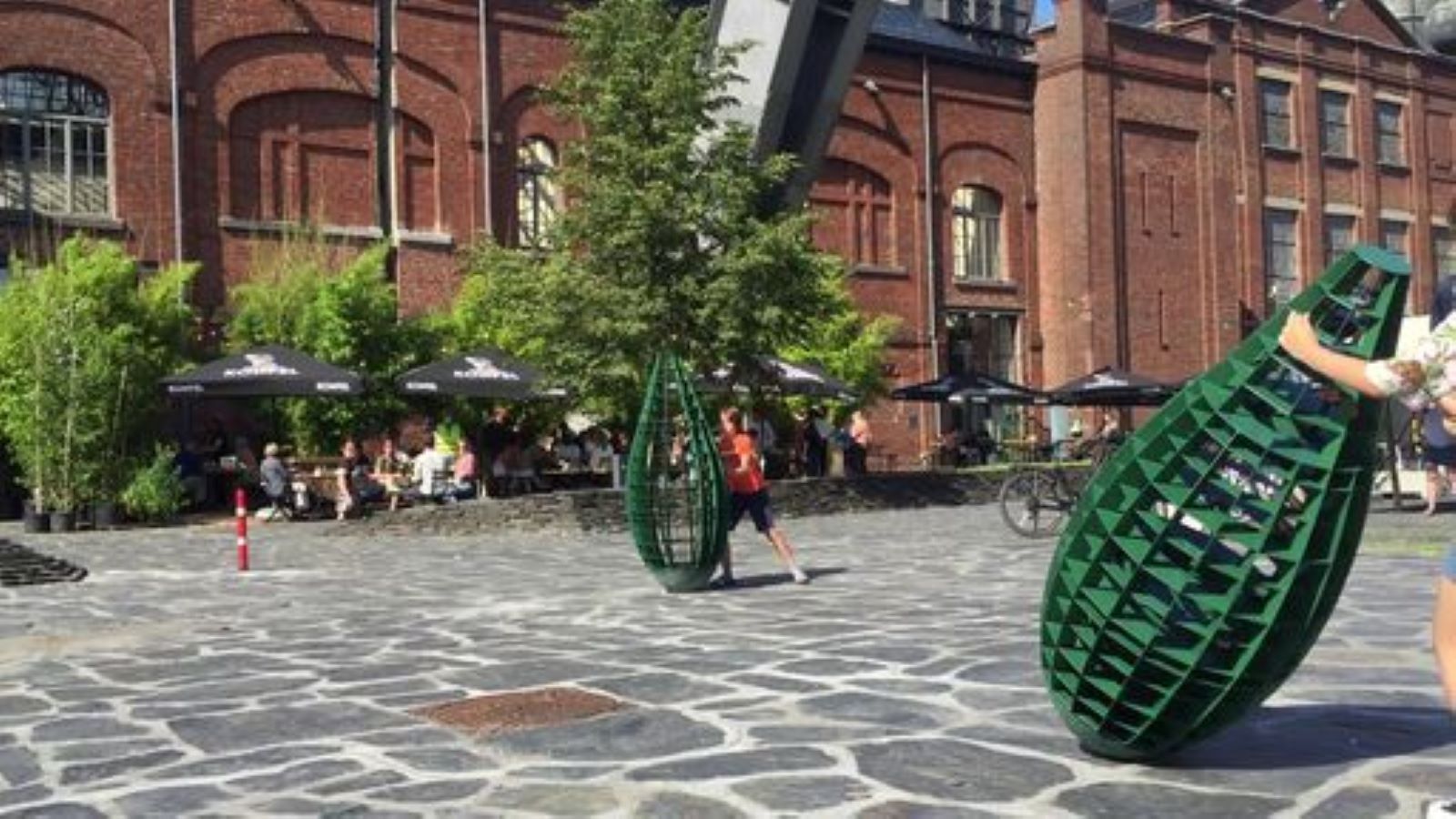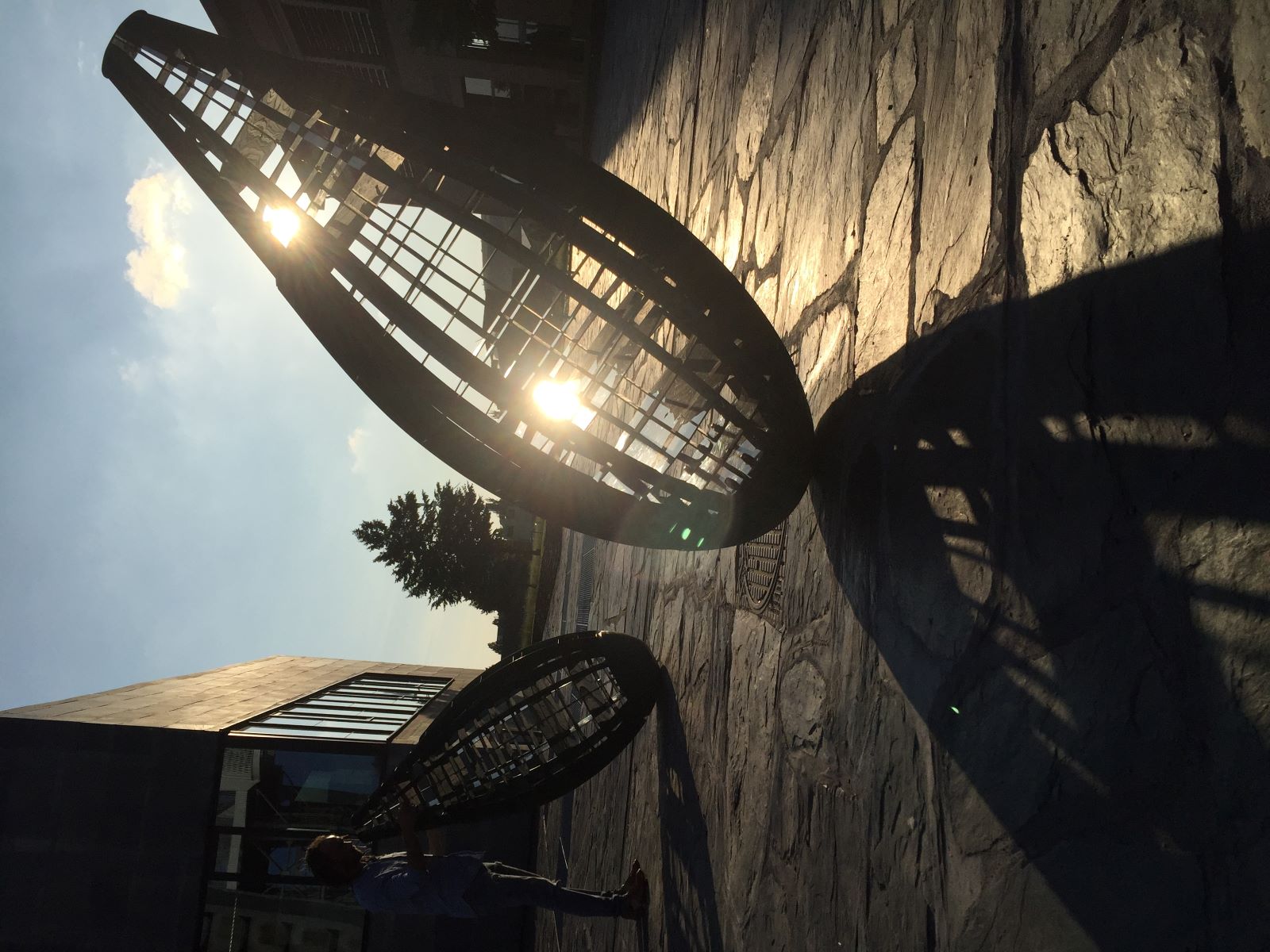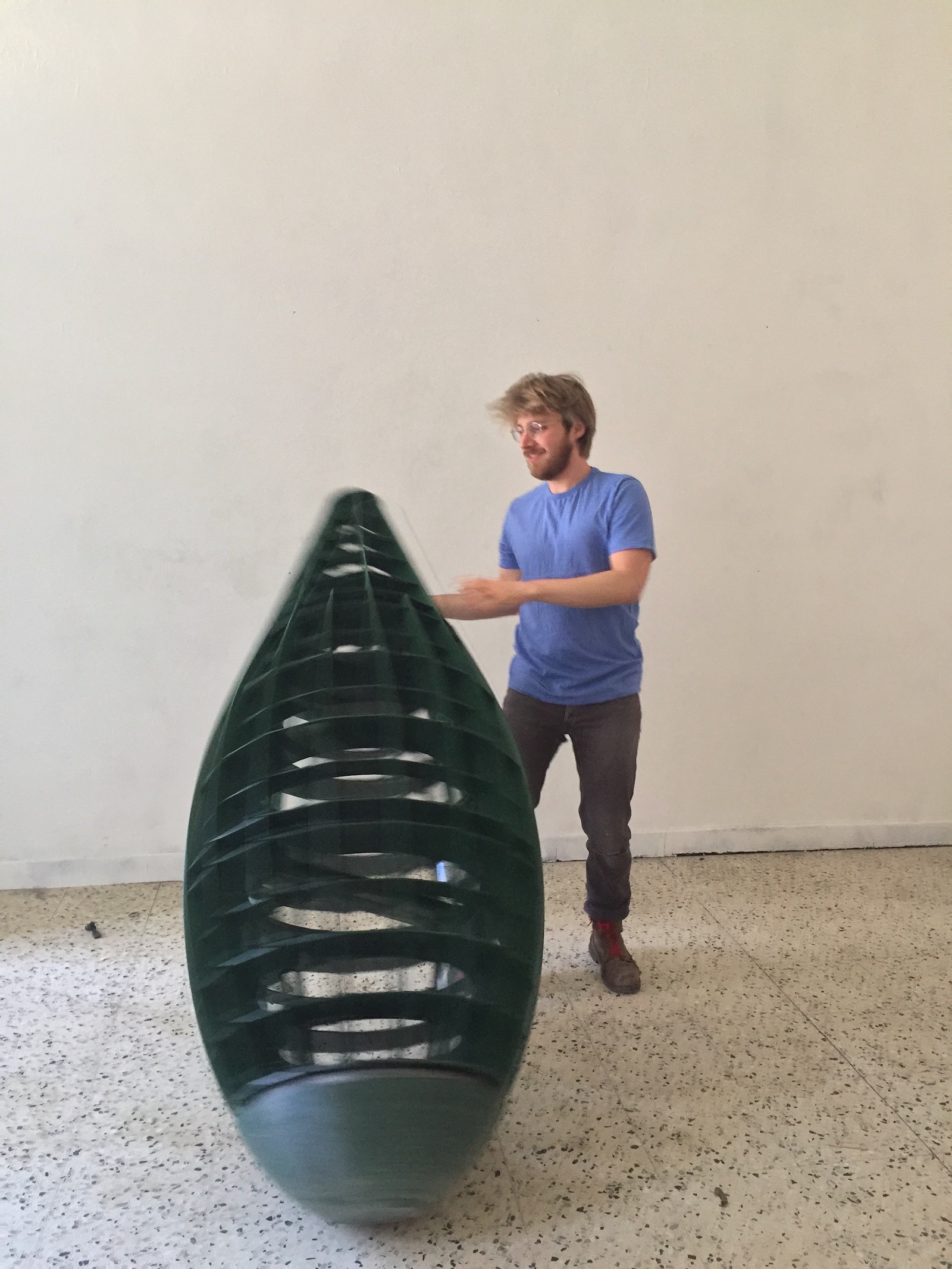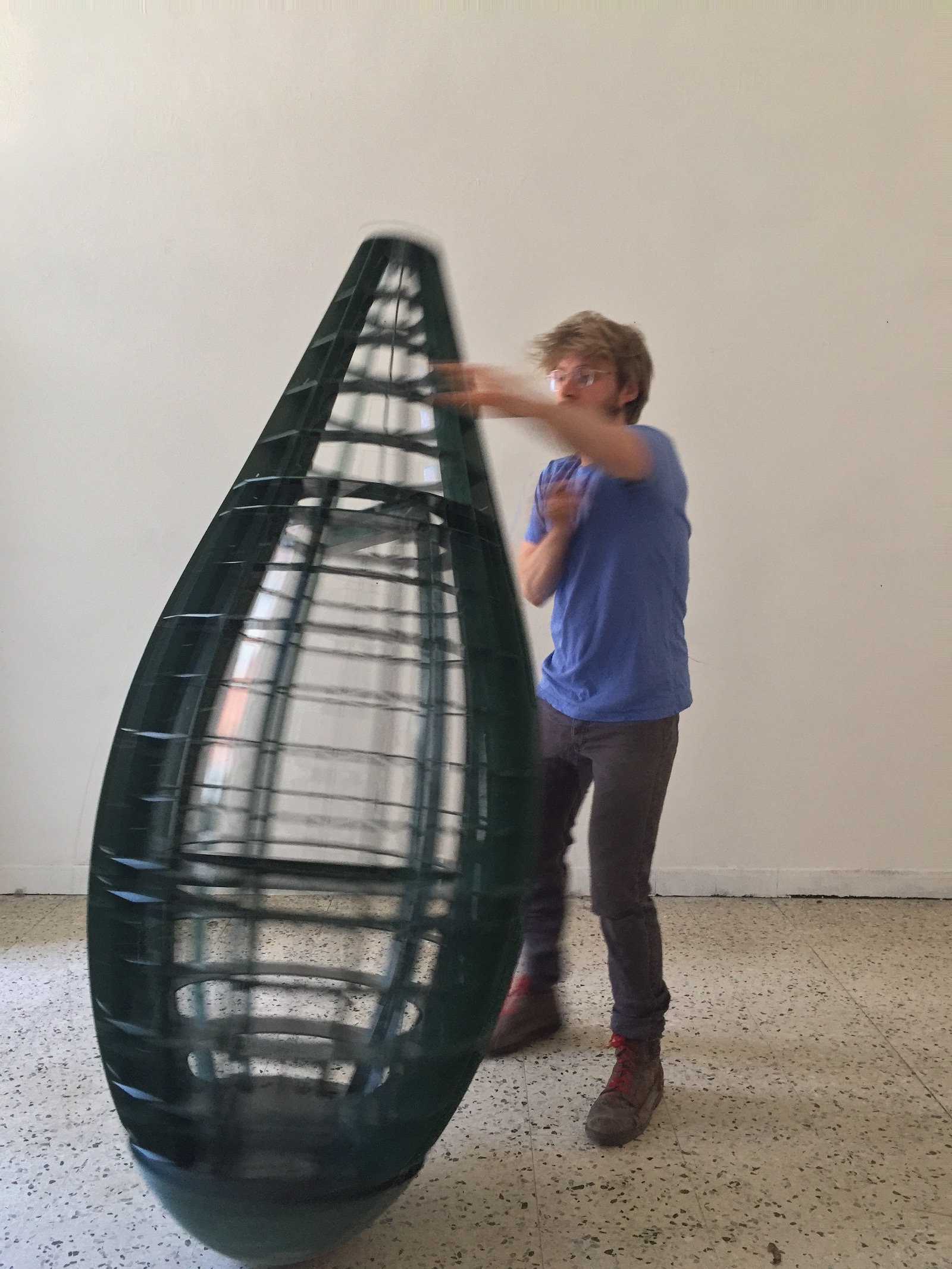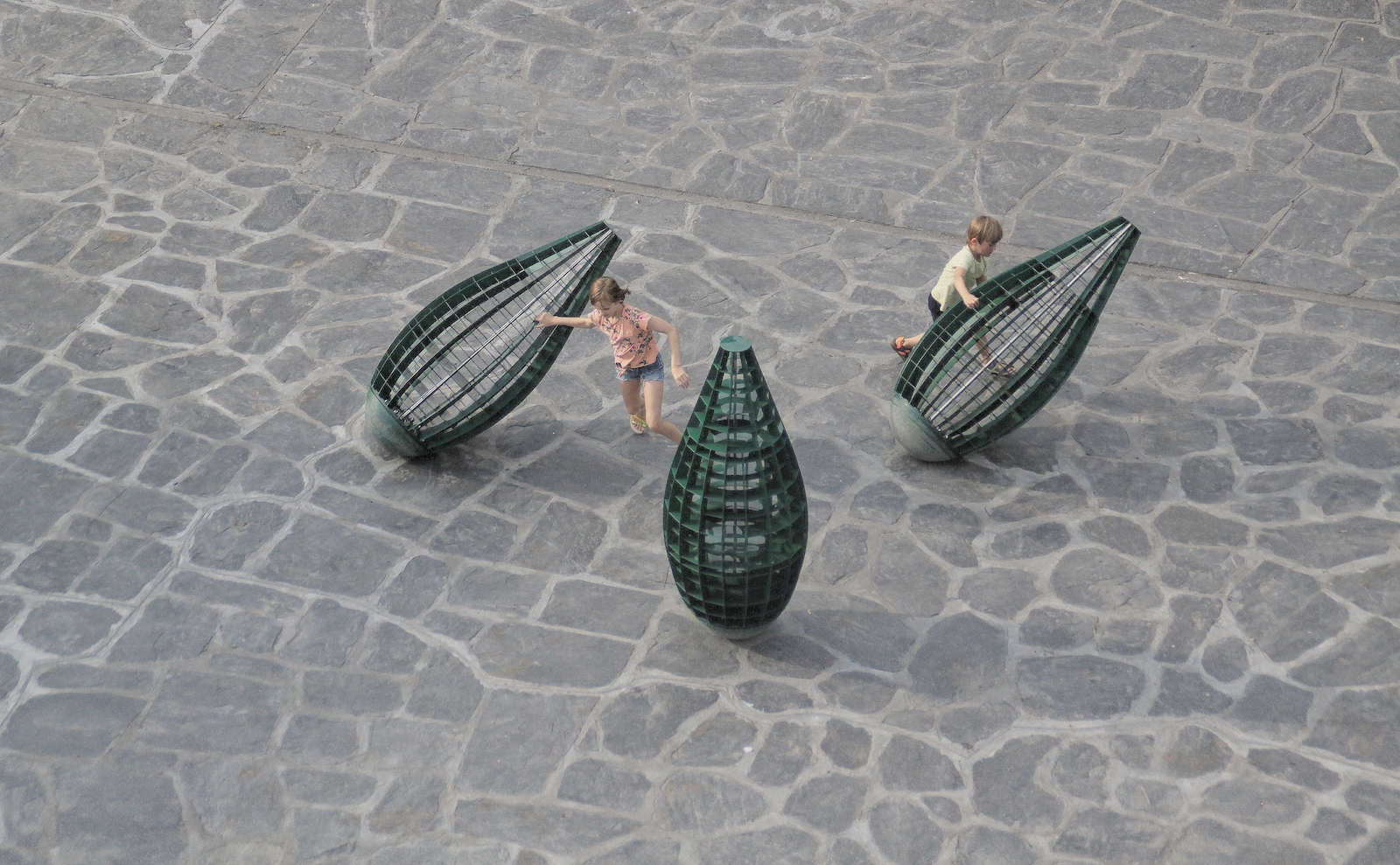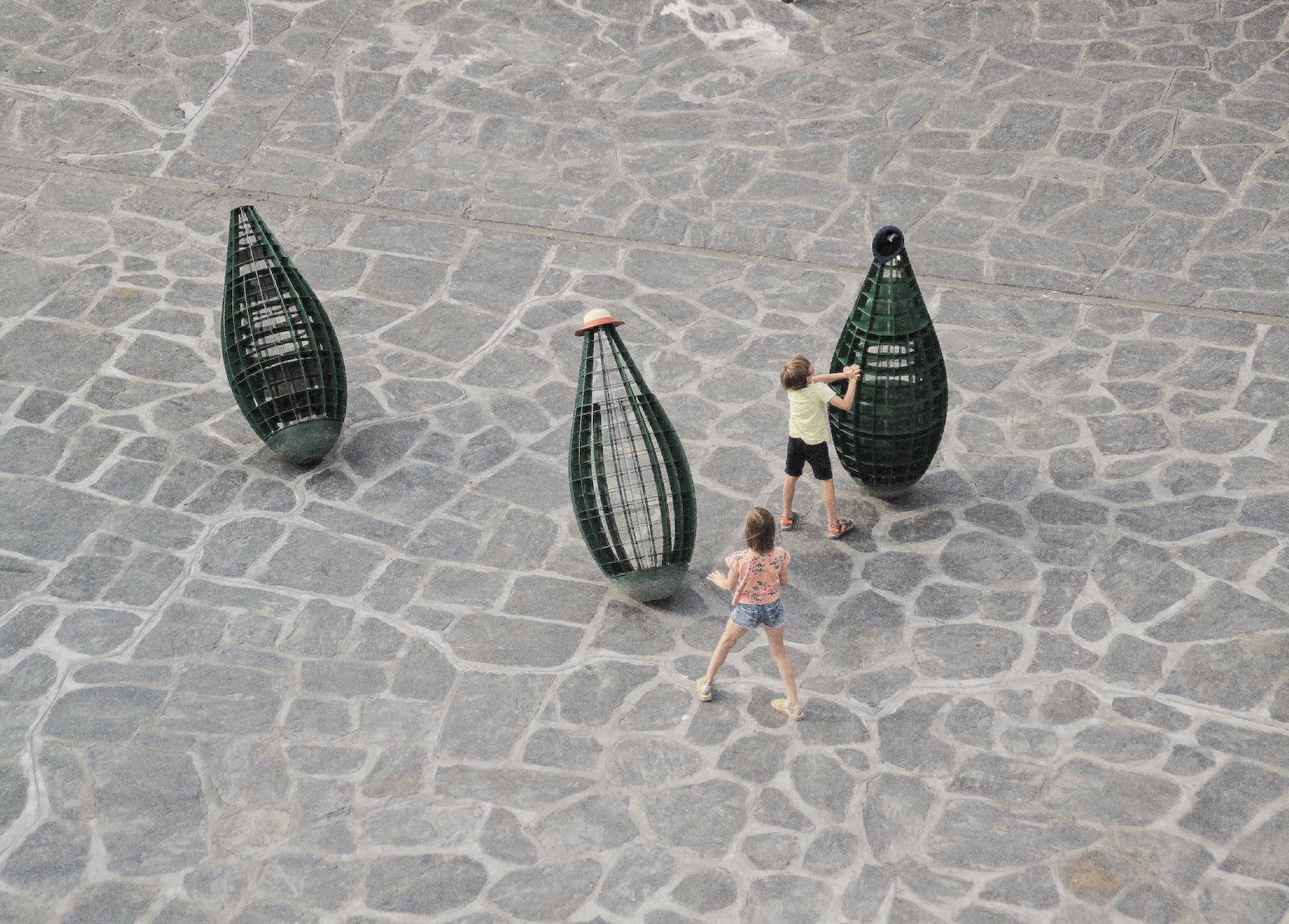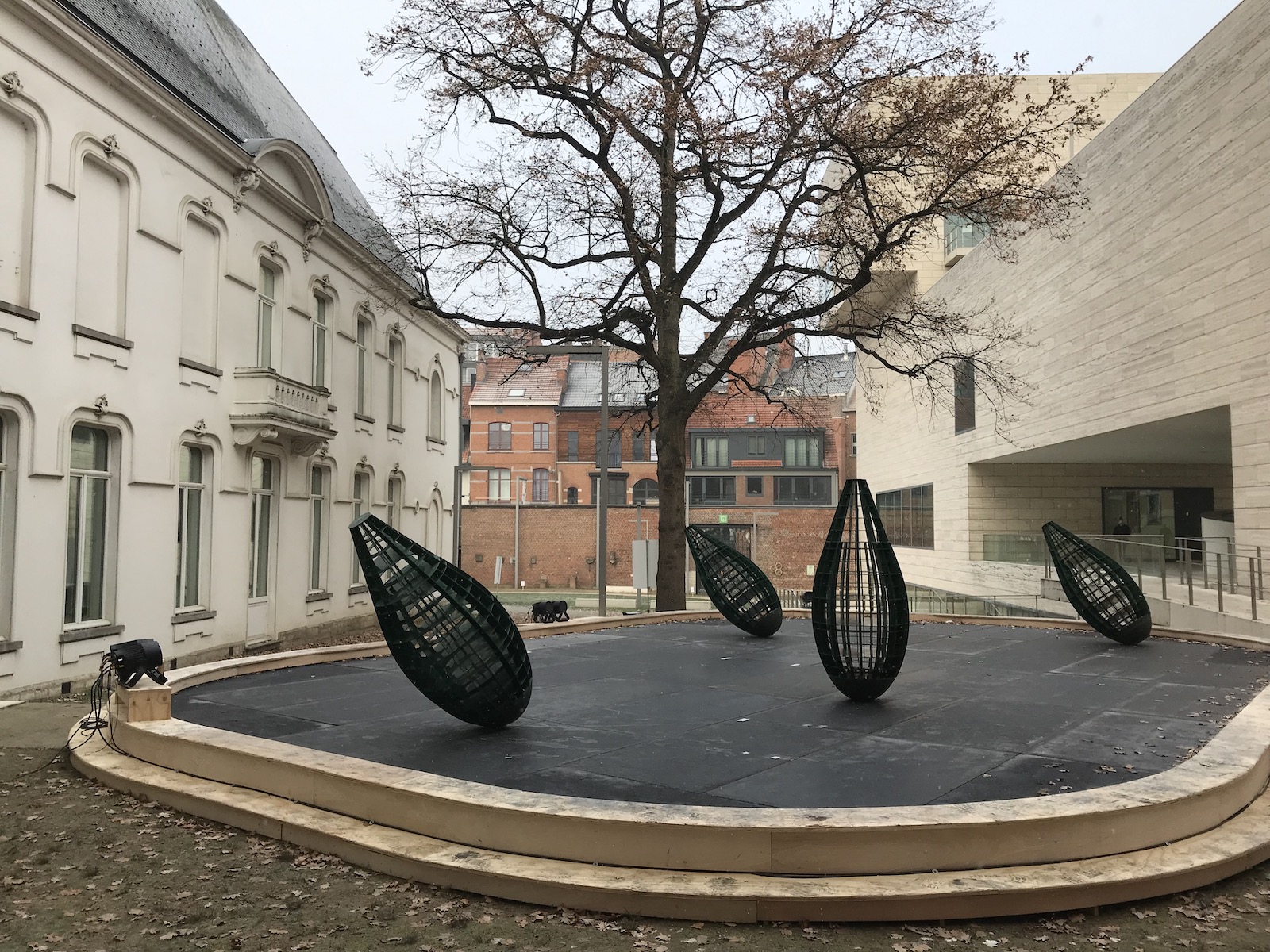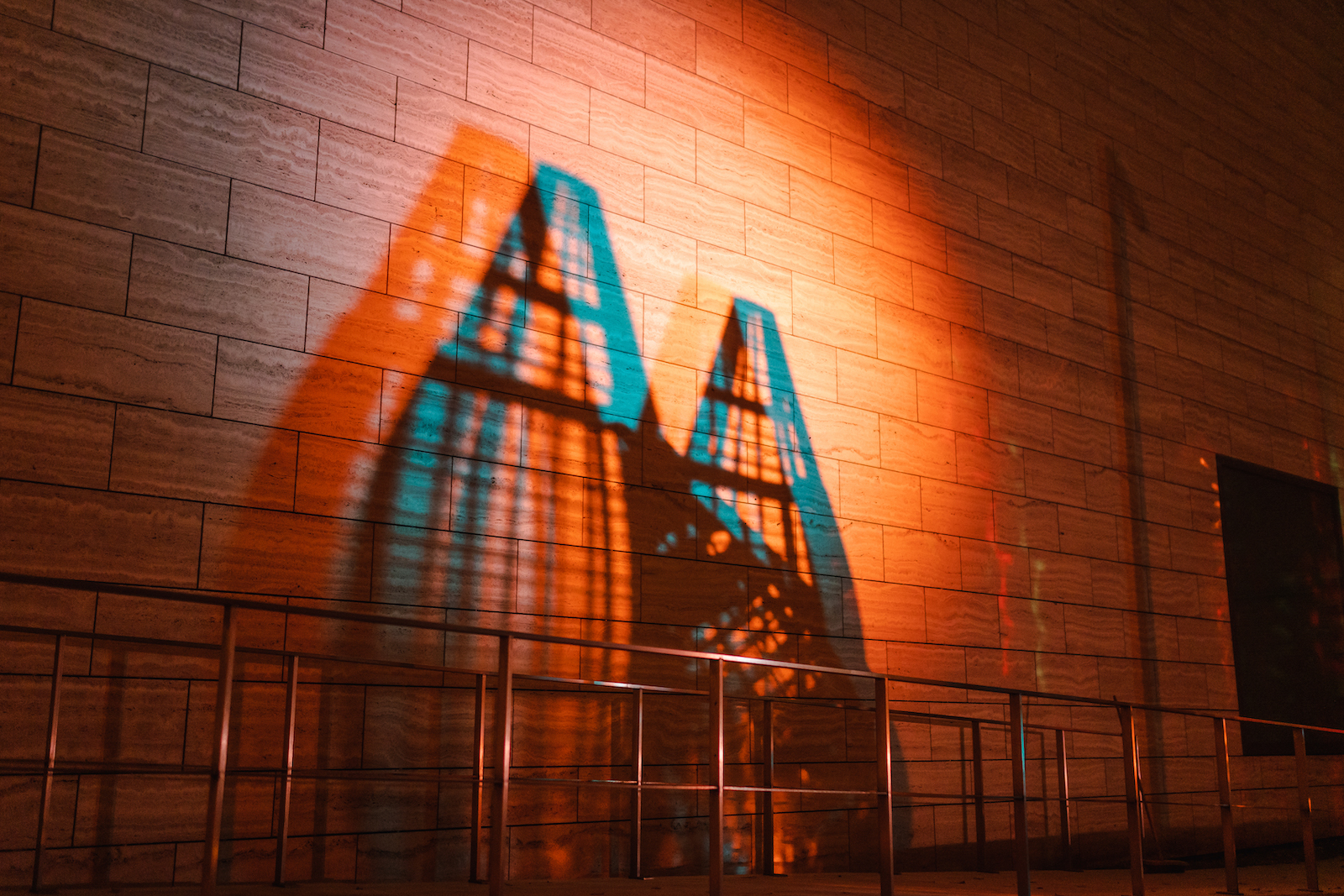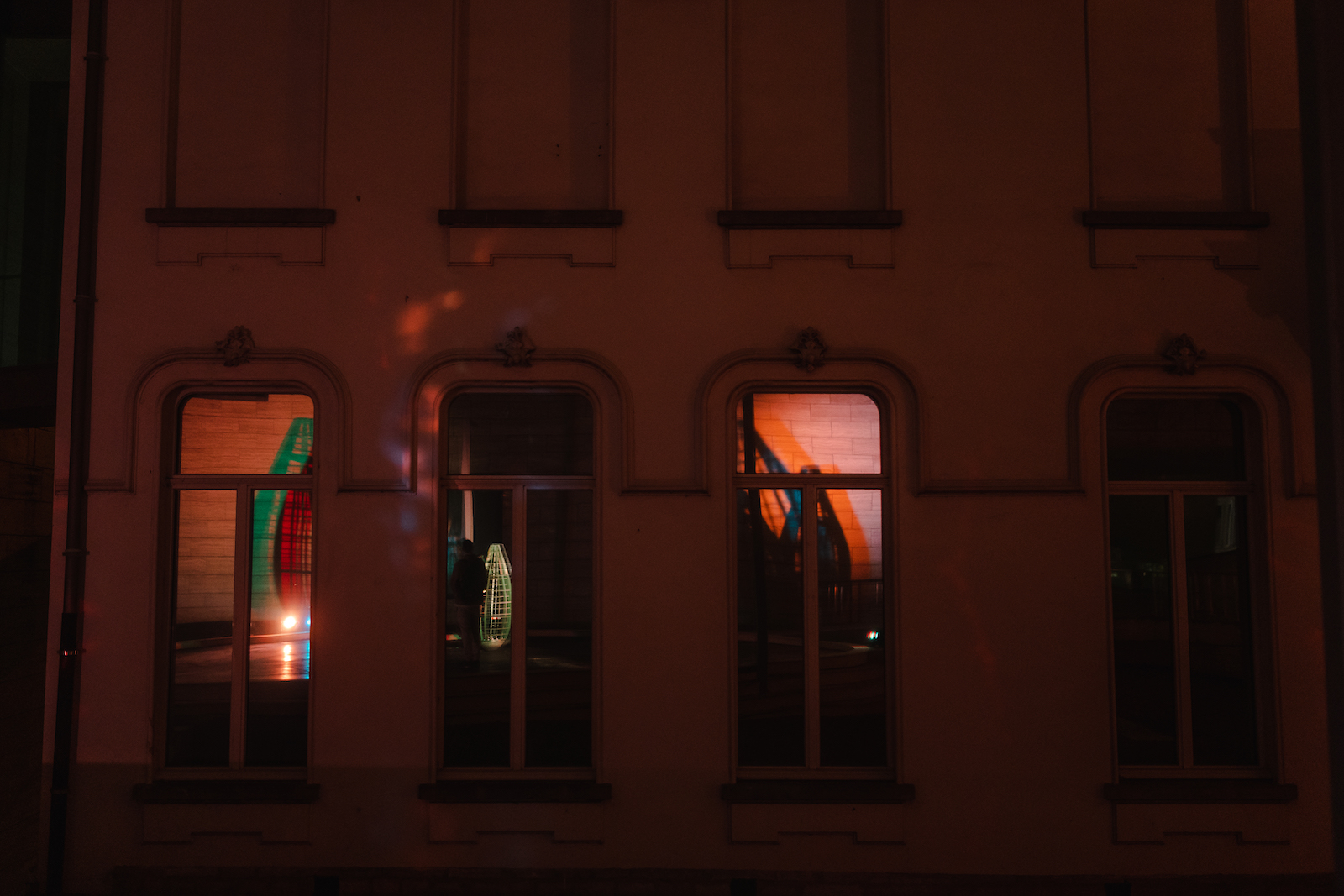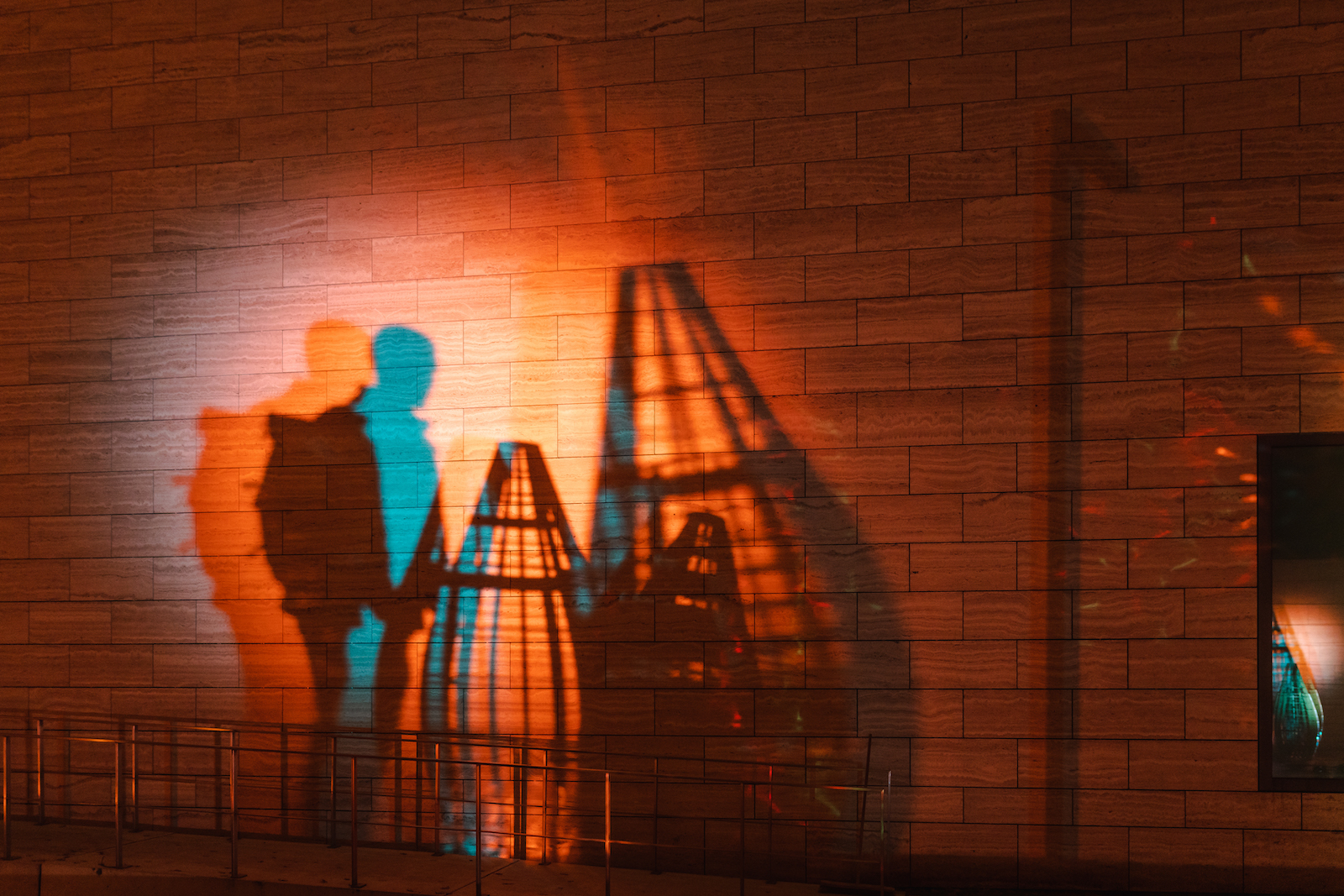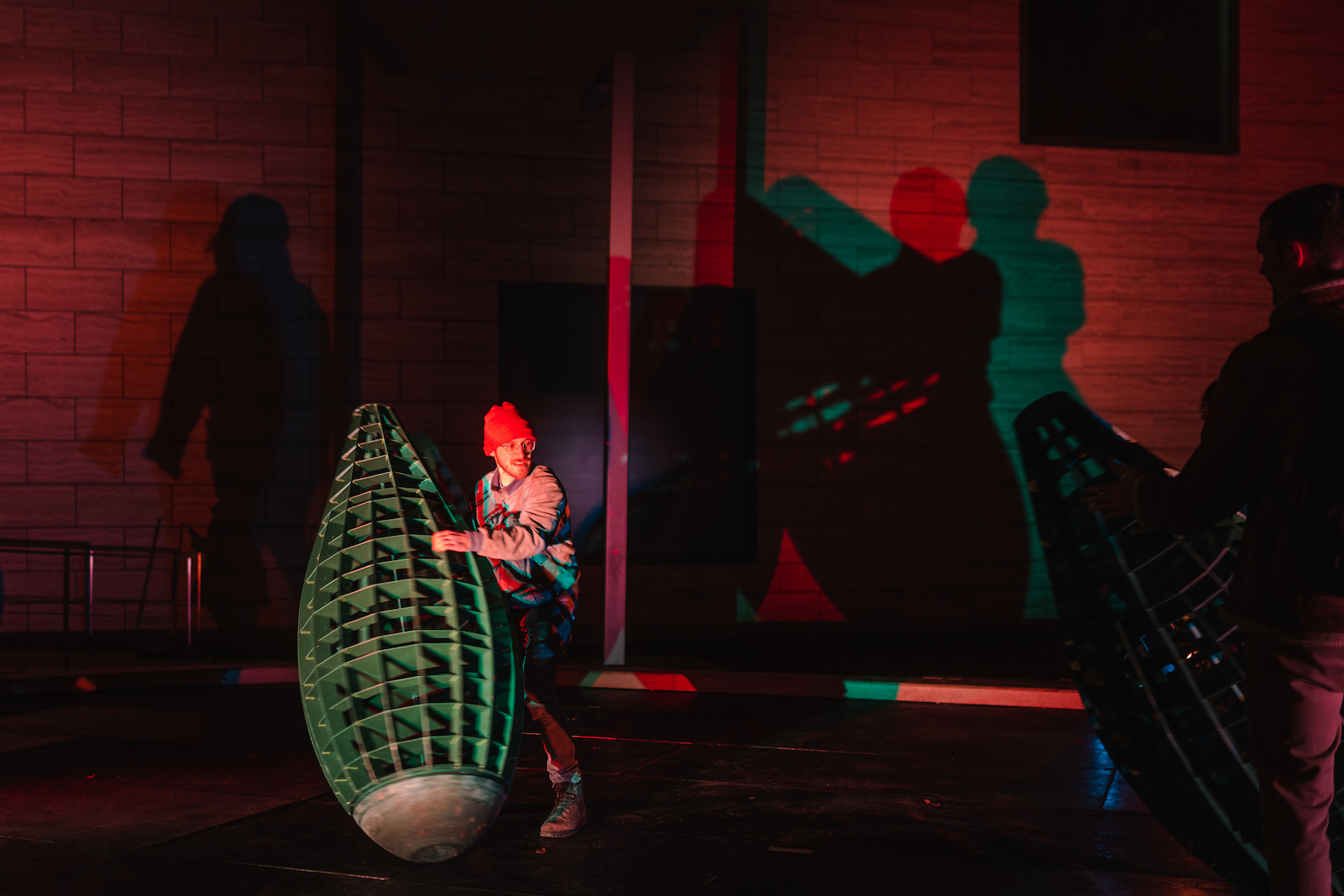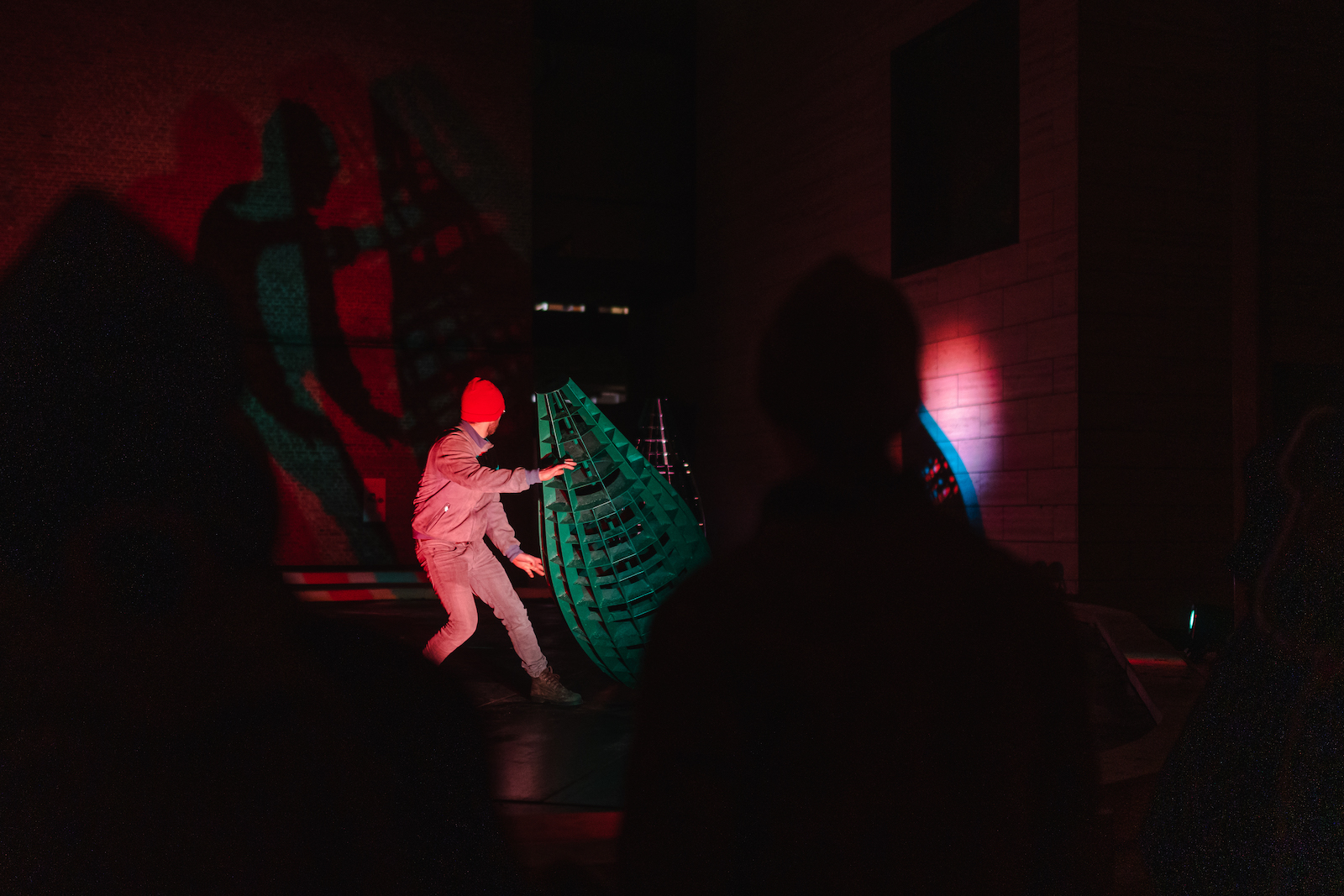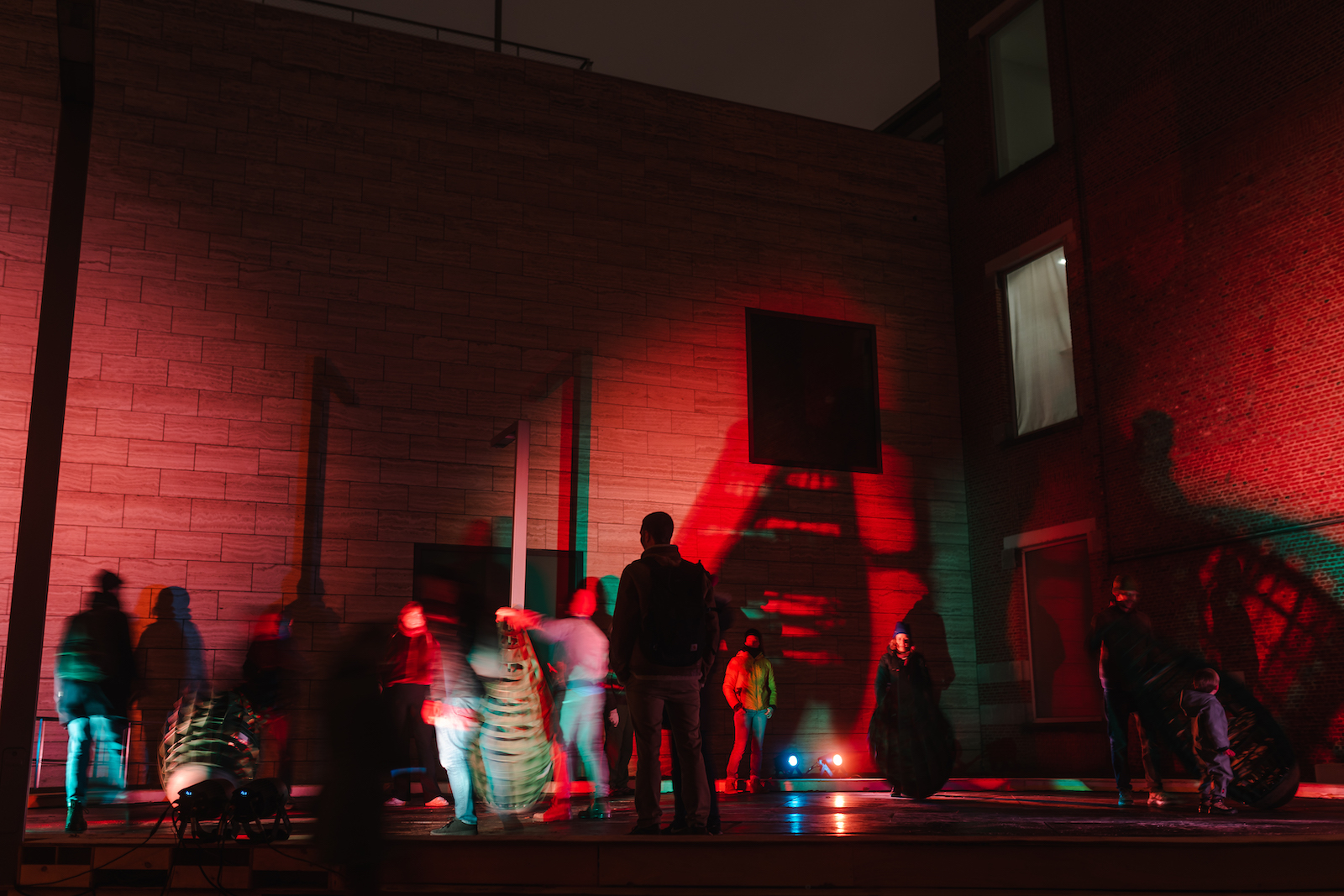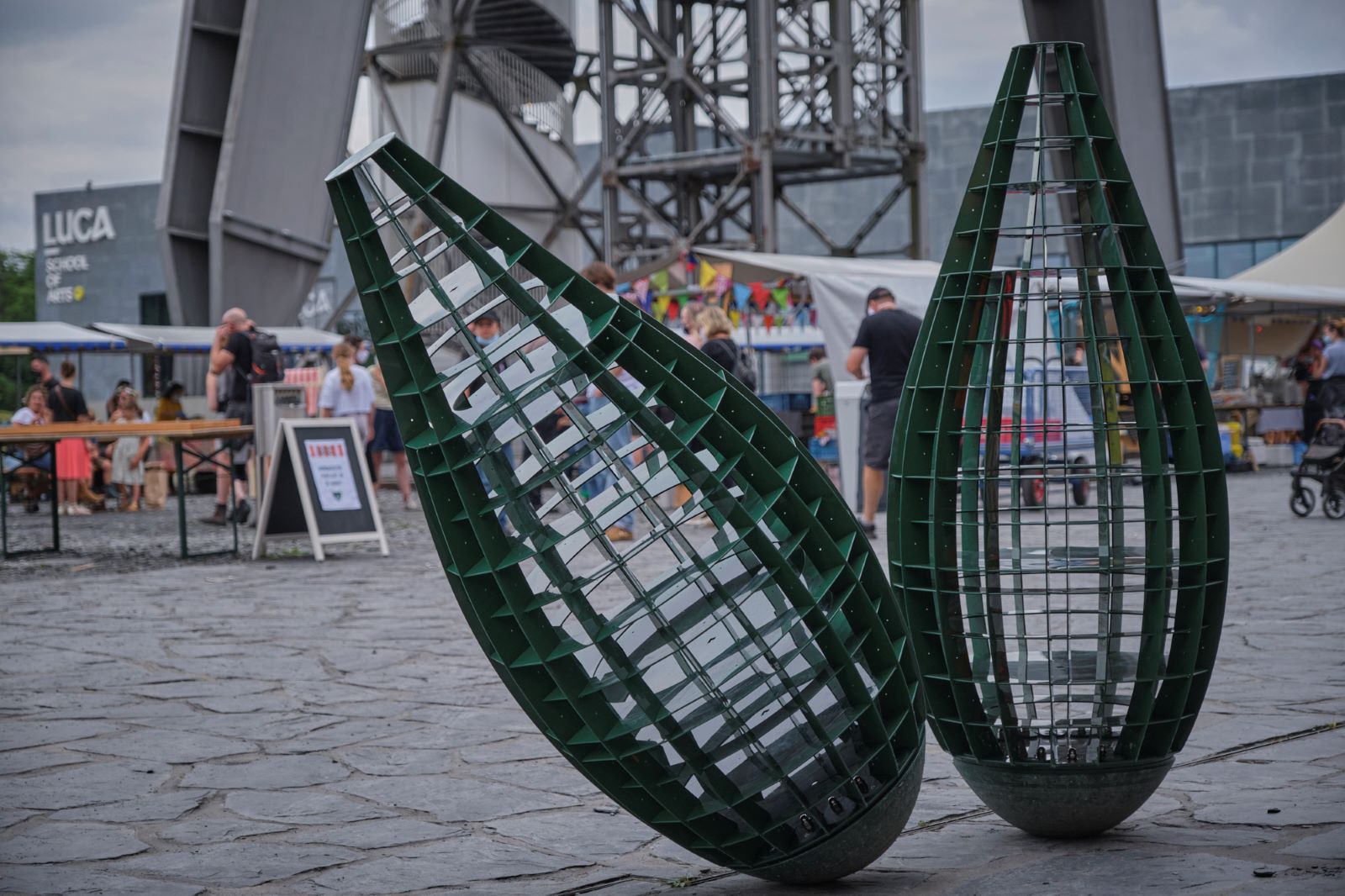Rocking Module
Gijs Coenen, 2021
Concept & realisation: Gijs Coenen, production: Werktank, with the support of the Flemish government
Photo’s: Fototuur – Gijs Coenen / (Un)Holy Light – Leuven
Previously
2021 - C-Mine, Genk (Belgium)
2021 - C-Mine in collaboration with STORMOPKOMST, Genk (Belgium)
2021 - Rode Hond Festival, Leuven (Belgium)
2022 - (un)Holy Light, Leuven (Belgium)
2023 - M HKA, Antwerp (Belgium)
2024 - LLUM BCN, Barcelona (Spain)
2024 - CCHA, Hasselt (Belgium)
Rocking Modules are sculptures that respond to simple movements such as pushing, pulling or dodging. Together the artworks form an experimental playground where the aim is to push the sculptures over or run around. Spectators become part of the artwork, as adults and children move intuitively with the objects. Rocking Modules explore perception by allowing a viewer to physically experience the sculptures. The artist’s aim is to investigate multiple facets of play by creating a variety of play objects, each with a unique response to movement.
Some kids are running up and down a high pile of earth. Even though it’s overgrown with plants, there’s no deliberate plan or intention to this mountain. It’s just dirt that was left there and has subsequently been claimed by a bunch of youngsters as an unofficial playground. Some are rolling downhill. Others are running to the top and screaming at an imaginary opponent, as they are king of the mountain now. The youngest is at the bottom grabbing dirt and squeezing it through her fingers with unwavering attention.
Play allows people to step outside of reality and, for a moment, to determine what is real and what is not… It is a “non-serious” action that absorbs their participants in a unique sort of seriousness, for a certain time.*
Visual artist Gijs Coenen explores the relationship between art and play by creating a series of sculptures that, together, function as a playground. One of these sculptures, called Rocking Module, reacts to simple movements such as pushing, pulling or evading. It is the artist’s ambition to investigate multiple facets of play by creating a variety of play objects, each with a unique response to movement. Within this series, spectators become part of the artwork, as adults and children move intuitively with the objects.
The sculptures find themselves at the intersection between sculpture, play-object and functional design. However, the conflict with functional design is significant, for how do you define the function of a free activity like play? Let alone; how do you design an object that supports this unpredictable action? Coenen is fascinated by how seemingly aesthetic elements such as color, texture and figurativeness take on a different kind of value within free play. As they definitely are key to our imagination. This is where play and art intersect conceptually. Both allow us to connect to the real world through an imaginary world, which calls for imaginative designs. And both allow us to connect to reality, whilst disrupting “the rules”.
It’s this tension between the serious and the non-serious that is shaping Coenen’s oeuvre. It’s this tension, combined with the artist’s urge to play, that works as an incentive for the art work.
*Johan Huizinga, Homo Ludens, 1944, Routledge and Kegan Paul.
Rocking Module zijn een serie sculpturen die reageren op simpele bewegingen zoals: duwen, trekken, vallen, lopen, … Samen vormen de modules een kunstinstallatie / speeltuin waar het de bedoeling is om de sculpturen te duwen over, errond te lopen, … Rocking Module onderzoekt perceptie door een toeschouwer de sculpturen fysiek te laten ervaren. Het spel van actie en reactie tussen toeschouwer en beeld maakt de installatie tot een performance. Net als de productietechniek benadert het eindresultaat de sculptuur vanuit een nieuwe, experimentele invalshoek waarin gevoel voor oerprincipes en geschiedenis gerelateerd is aan de hedendaagse mens.
